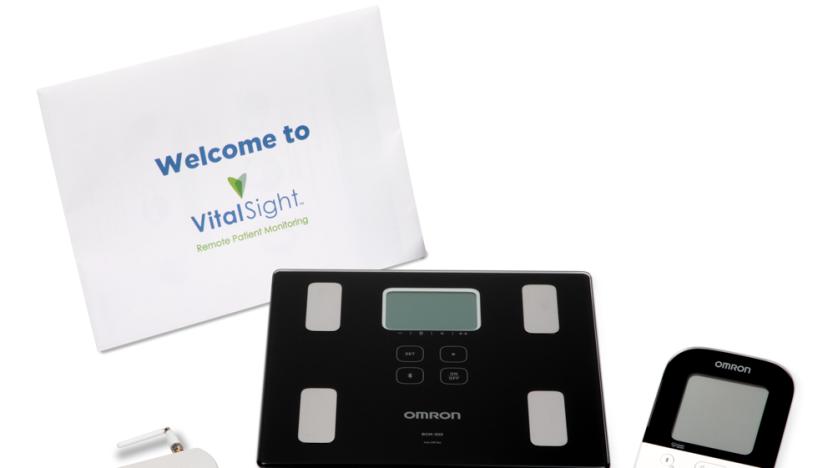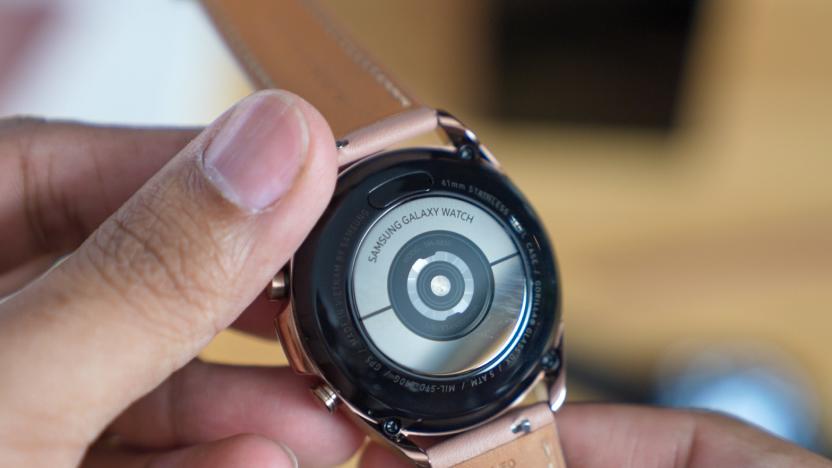blood pressure monitor
Latest

Omron's VitalSight is a blood pressure monitoring service for telehealth
Before the pandemic, telehealth — seeing a doctor virtually instead of in real life — was hardly used by most patients in the US. In response, we have seen more connected tools like glucose monitors that can monitor vitals at home. Omron's VitalSight aims to do the same for hypertension, or high blood pressure, which can be a precursor to a stroke or heart attack.

Samsung's Galaxy Watch 3 supports ECG, but only in South Korea for now
Most notable is the electrocardiogram (ECG) feature, something Apple added to the Watch series 4 in 2018. ECG isn’t available at launch, but Samsung says it’ll be available soon on both the Watch 3 as well as the Watch Active 2. Samsung is also including blood pressure monitoring in the Watch 3, something not available on the Apple Watch.

Google Health's New Year's Resolution is to cease to exist, countdown begins to save your data
Back in June, Google announced that it would be 'retiring' Health effective January 1, 2012. Now, everything appears to be on-track for the shutdown, with Google sending out a final reminder to Health customers earlier today. You have until the stroke of midnight to access the service or port your data to a competitor -- after which point you'll no longer be able to view information saved to your account, though it'll remain available to download in .zip format for another year. Want to know more? Hit up the source link for the Google Health FAQ.

Google 'retires' Health and PowerMeter, lets you save your vitals through 2012
Remember that Withings blood pressure monitor for iOS that we went hands-on with last week? It integrated with Google Health. The search giant's health management portal also paired with dozens of other services (a heaping handful can be seen in the image above) to aggregate and track all of your data, and share it with family members, friends, and doctors. The service didn't have the widespread impact that Google expected, however, so it's taking Health offline after the clock strikes midnight on January 1, 2012. You'll have another year to download your info, or send it directly to competing services. Also on the chopping block is PowerMeter, a free energy monitoring tool that pairs with smart power meters and other energy monitoring devices to help users better understand consumption habits and ultimately reduce costs. That project will get the boot from Mountain View on September 16th, but you'll be able to log in to your account to download a CSV file. We imagine Health and PowerMeter are already plotting their trip down south, to get in a few thousand rounds of golf with Video Store at Pebble Beach. Perhaps to be joined by Buzz and Wave, in the not-so-distant future?

Withings Blood Pressure Monitor for iOS hands-on (video)
Withings users not satisfied with only being able to share their weight with the world can now add blood pressure and heart rate to the mix. This iPhone-connected blood pressure monitor made its first appearance at CES, but you'll finally be able to order one of your own today. Compatible with iPhone, iPad, and iPod touch, the $129 accessory costs three to four times as much as off-the-shelf blood pressure monitors, but integrates well if you're looking to pair it with your Withings scale for a complete vitals management solution. Results can be sent to health sites like Google Health and Microsoft HealthVault, or directly to your doctor. Care to see how it works? Join us past the break for a hands-on look at the monitor, including a video comparison with the in-store vitals machine at our neighborhood Kmart. Update: Withings wrote in to let us know that the blood pressure readings in the video below were likely inflated because we were talking, though we do appreciate the concern you've already expressed in the comments.%Gallery-126616%

Withings fittingly debuts iPhone-connected blood pressure monitor at CES
Trust us -- no one on the Engadget staff wants to know what their blood pressure is right about now. For those trapped in the hurricane that is CES, there's probably no better product to have laying around than this... but only if you're looking to confirm your suspicions about being in a high-stress career. Withings, the company best known for its connected scales, has just revealed the planet's first iPhone-connected blood pressure monitor, with an aim to make measuring vitals as easy as pie for iOS users. The idea is fairly simple: just plug the arm band into your iPad, iPod touch or iPhone, dial up the gratis app and start the process. All of the data is logged on the user's secure online space, and there's even a secure sharing feature that'll beam your abnormally high rates right to your frightened physician. It'll go on sale tomorrow around the globe, with the asking price set at $129 / €129. Update: Looks like iHealth beat these guys by a dozen hours or so. Splitting hairs, but there it is. %Gallery-112205%

Wearable blood pressure monitor: portable and fashionable
We've seen some wild ideas when it comes to blood pressure -- including, yes, underpants -- but this newest device, a small monitor attached to the hand, which can be worn 24 hours a day for continuous monitoring, strikes us as having the potential for extreme usefulness. The monitor works differently than regular old blood pressure cuff, using a method called pulse wave velocity, which measures the pulse at two points along an artery. Built by a team of engineers at MIT, this prototype could boast a lot of advantages over monitors, including its portability, its ability to see long-term patterns of rises and falls in pressure, and of course -- you wouldn't have to be at the doctor's office to use it -- which is bound to take a little stress out of the equation. The device is moving toward commercial production and Harry Asada, leader of the MIT team, sees the possibility for monitoring conditions such as sleep apnea in the future as well.



